Vehicle Safety Products: Safer All Around
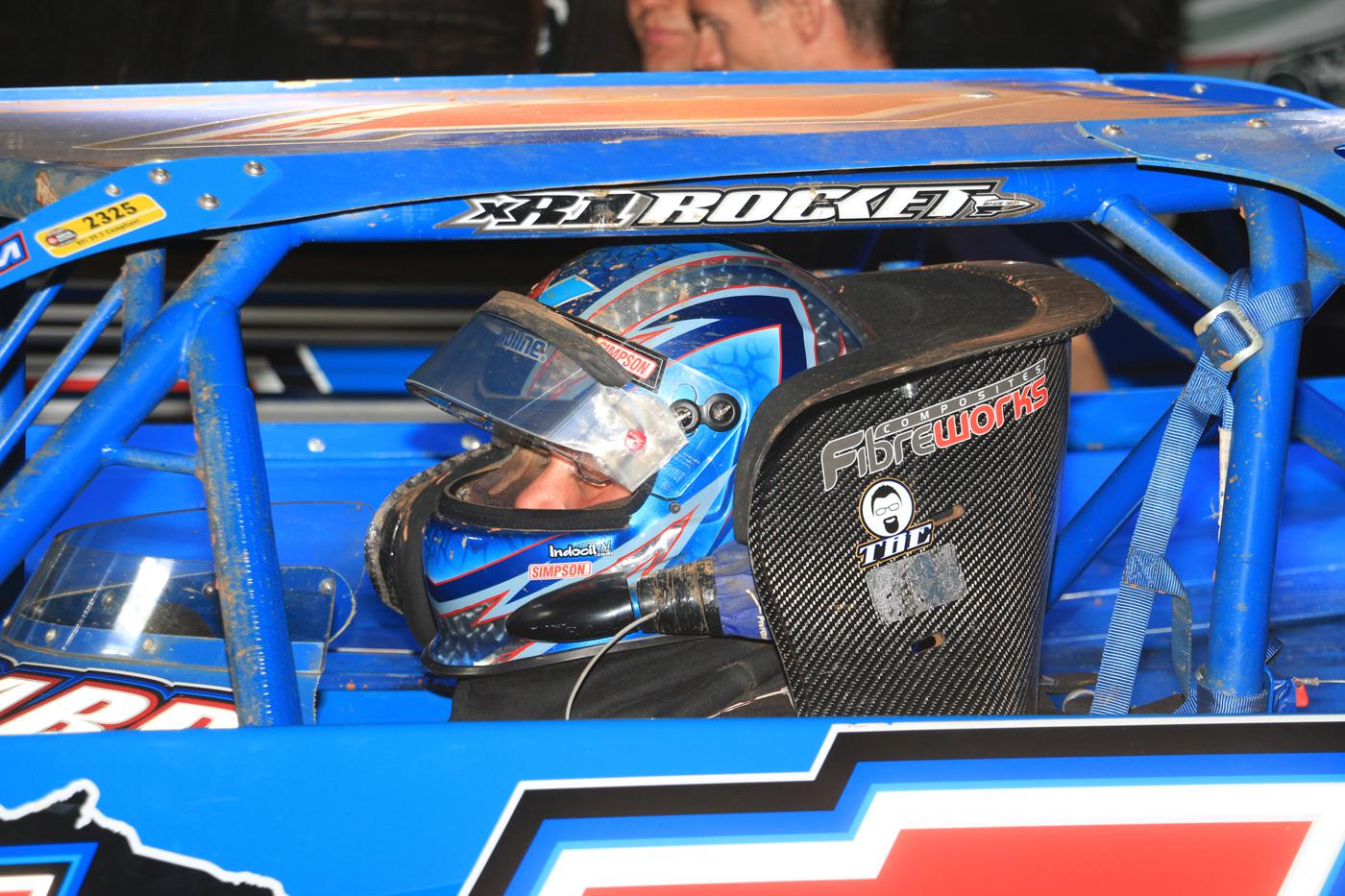
Just count the numerous ways that vehicle safety product development is protecting today’s race car drivers.
In today’s motorsports arena, there are few components on a race vehicle that haven’t undergone a critical safety review. Comprehensive rulebooks are a testament to this reality. A generation ago, there were suggestions for safety equipment. Now there are detailed mandates that are strictly enforced.
Serious accidents used to be shrouded in secret internal investigations. Now motorsports safety research facilities have access to ‘black box’ data recorders that are installed in many types of race cars. Constructive safety conferences are held around the world to share innovative ideas and evaluate test results on new equipment.
Accidents, however, still happen, and a death on the track is a tragic reminder of the dangerous speeds modern horsepower and chassis designs can deliver. So there’s an eye constantly focused on building even safer vehicles.
“I think we’re always looking for ways to improve product,” said Fred Bickford of ButlerBuilt, a manufacturer of racing seats and other safety equipment based in Concord, North Carolina.
Seat and roll-cage design is one example where components have worked hand-in-hand to drastically improve driver safety in the past two decades. Researchers learned that confining the driver greatly increases survival upon impact.
“We really want to cocoon the driver into the seat,” added Bickford. “The less movement there is, the better off they’ll be in an accident.”
Driver Comfort and Safety
Full containment around the ribs and head is crucial, and so are the seat dimensions. A large seat might seem more comfortable than a smaller, tight-fitting version. Some drivers think the safety harness will hold them in place. Belts, however, are for impact. The seat should hold drivers tight enough so they can direct all their energy into driving.
“If you’re coming to the kink or going through the carousel and you’re loose in the seat, you put your elbow up so that you are centered and you put your left leg out to hold your position,” explained Gayle Gaborsky of Speed Seat Factory, Delafield, Wisconsin. “All of that is mental and physical fatigue.”
Racing seats are generally manufactured from either steel, aluminum, fiberglass, carbon fiber or other composite material. There are numerous configurations to fit modified street cars all the way up to scratch-built race cars. Some sim racers even get high-dollar racing seats to enhance the experience.
“Recently, we found a composite matrix fiber-reinforced polymer that allows us to build very strong, yet lightweight and affordable seats. This discovery led to us to launching five new seats within the last year,” explained Patrick Utt of RaceQuip, Riverview, Florida.
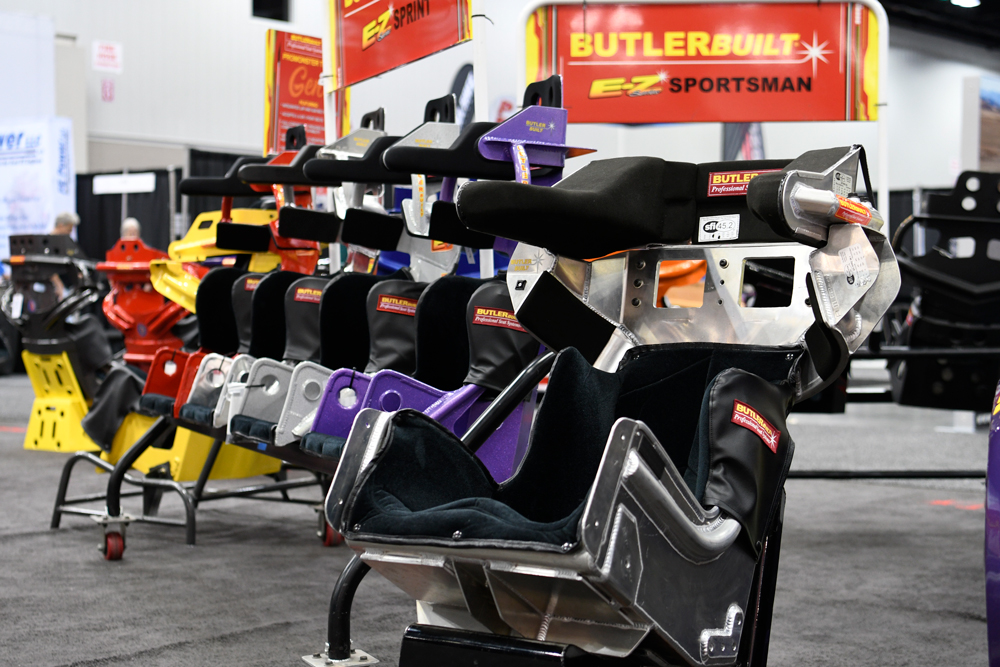
Rules may mandate a specific material and construction design, such as implementing side head restraints, which are often called ‘halos.’ Rules can also apply to the halos, such as making sure the driver has a proper sightline. Once the rules are understood, the important decision factor is the fit. Seat manufacturers have detailed instructions on measuring the driver’s body and applying those numbers to the seat order.
“When racers follow the measurement guide, then everything on the seat is made to fit their body,” said Bickford, noting some minor supports like lumbar can be added later to improve the fit.
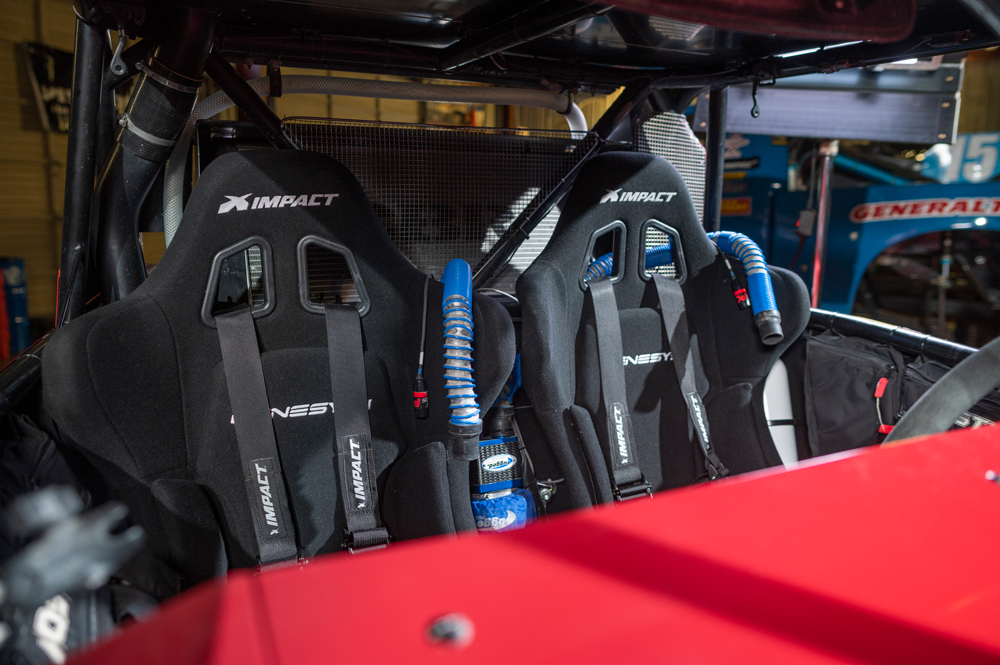
But many of the top drivers get a fully customized seat with a pour kit; that is, a bag of liquid molding material is placed into the existing seat or compartment area, and the driver sits on the bag until the solution solidifies and reveals a perfect mold of the driver’s physique.
“You can pour a kit to fill voids,” said Bickford. “Some people have different arches in their back and things of that nature.”
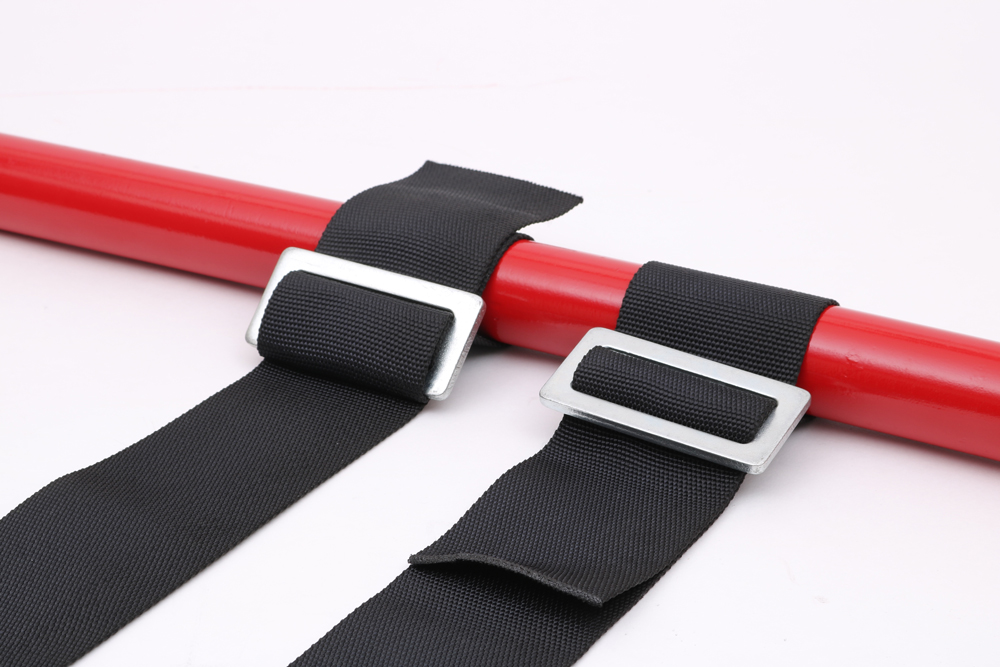
Most drivers in top-tier racing circles have custom seats molded for them.
“Everything is specific to car and driver,” said Gaborsky. “That’s the beauty of this safety feature because we position you. The pedals have to be in the correct position because everything is part of the equation.”
For endurance racing, special inserts are made for each driver in that seat. That’s the type of class racing where the fatigue factor becomes a serious safety issue. The materials that Speed Seat uses meet all sanctioning body requirements. For drivers with multiple cars, Speed Seat can scan the first seat and make identical reproductions as needed. Most like the same seat position, but others like to have a choice.
“If we poured him three times, he can sit different each time. He could be a little more upright or a little more laid back,” she continued. “You get a seat that you absolutely love, and if you have multiple cars, then you just get a replica of that seat and it’s identical.”
Buckle Up
Advancements in materials have led to significant changes in the safety harness market.
“Most of the changes come from advances in materials or manufacturing techniques,” said Utt. “One example is that a number of years ago we transitioned away from nylon webbing for seatbelts and window nets and started using a softer, more durable polyester webbing.”
“Of all the things that we’ve dealt with in the last 10 years, restraints have probably changed more than any of them,” said Ben O’Connor Jr. of Impact Racing, Indianapolis, Indiana. “Which is pretty wild, when you consider just how simple the restraint concept is, yet, how complex it can be in terms of all the little details.”
One of the more significant trends is the move to two-inch-wide belts. The industry standard had long been three-inch, which is basically a carryover from what the military was using in the 1950s. The materials available then required a three-inch-wide belt to withstand the loads of an impact.
“With modern textiles, it’s just not necessary. We can meet the absolute, most stringent standards with two-inch restraints,” explained O’Connor. “As a matter of fact, typically the hardware will fail before the webbing does.”
“The big change in the industry has been from three-inch to two-inch,” agreed Danilo Oliveira of G-FORCE Racing Gear, Acworth, Georgia. “The perception that three-inch is stronger doesn’t exist today, because now we have stronger materials. European racers took to it earlier than the US. You probably see it more often in Formula 1, sports cars, road racing, and Indy cars. The three-inch is probably more popular with dirt tracks and drag racers.”
The move to two-inch belts was somewhat encouraged by drivers who find that width works better with their HANS devices. At one time, drivers were tucking their three-inch belts under to achieve a better fit. Then the FIA conducted tests with the two-inch belts and found some safety advantages.
“From a biomechanical viewpoint in terms of safety, it is generally accepted and understood that a two-inch restraint is safer than a three-inch—especially in the area of the hips,” said O’Connor. “The hips are the largest load-carrying capacity for the body, and with two-inch belts you can get really tight without bunching up.”
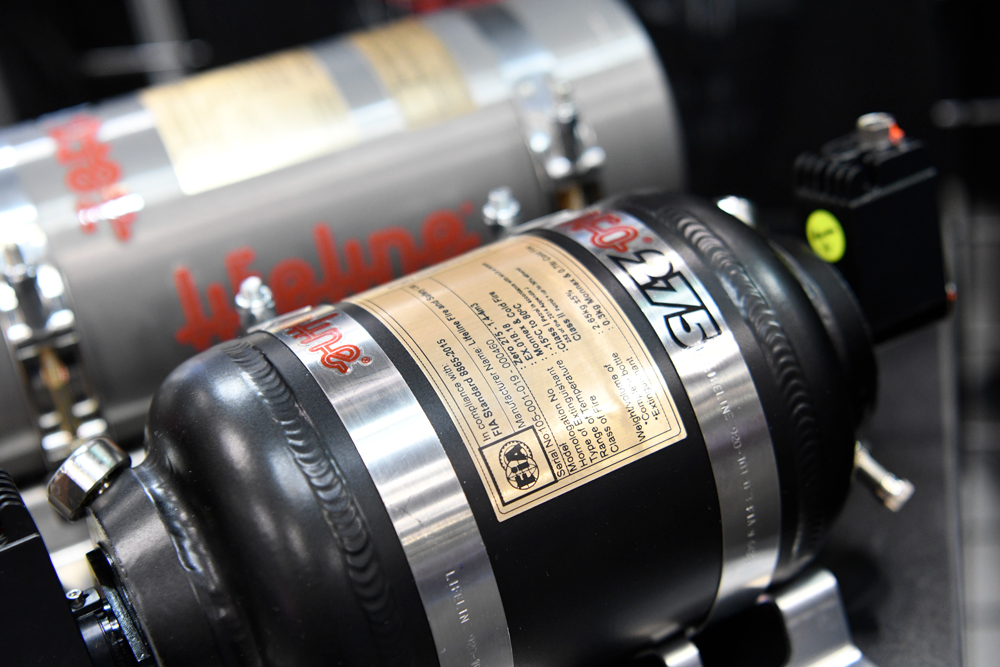
Adjusters have also changed in recent years. They’ve been easier to tighten and loosen in addition to losing weight. “Most of the weight of a harness comes from the buckle and adjusters,” noted Oliveira. “There’s a trend toward aluminum.”
Enhanced seat-belt materials have improved window nets, as well. “With window nets, there really isn’t much else you do,” said Oliveira. “We have better fabrics than five years ago at the same cost.”
The biggest mistake racers make with regards to the safety harness is the installation. “Every time we walk through a pit area, we see seat belts improperly installed,” said Utt. “A standard SFI instruction sheet is provided with each belt set sold by every manufacturer, yet many racers do not look at their installation angles and belt threading through attachment hardware.”
Slowing Down
Advanced materials have also improved parachutes for drag racers. Nylon continues to be a popular choice for many classes. However, faster and heavier cars have prompted chute suppliers to explore other options.
“Nylon chutes have a limitation. They can literally burst apart,” said O’Connor. “Our latest chute for the fuel and alcohol ranks is a Vectran fabric that we found a few years ago that gives a longer lifespan. Fuel teams could get several passes out of nylon before they need a patch or replacement. Now they’re getting almost a season out of the new ones. It’s a bit more expensive on the front end, but long term it saves them money.”
As mentioned earlier, every component of a race car has undergone some type of safety scrutiny. Rear-view mirror design and location can be controlled by sanctioning bodies. Minimum tubing standards for rollcage construction can also mandate that the padding be certified by FIA or SFI.
Steering wheels are even factoring into the safety equation. “We were the first to revolutionize NASCAR with a new steering wheel that absorbs load under impact,” explained Max Papis of Max Papis Inc., Mooresville, North Carolina. “We did a study of impact testing to understand the deformation factor of the steering wheel itself, and we created structures that under the heavy impact will protect the driver. The technology that we learned from the stock-car steering wheel has been implemented in all products that we make. We’re slowly educating the masses that the steering wheel is a safety item.”
The new safety features, such as seats and harnesses, can be applied universally throughout motorsports. Many racing classes have specific requirements for other equipment. One safety item catching on with road racers is the rain light for the rear of the vehicle. They’re required to emit a certain brightness to help drivers see vehicles that are obscured by water spray from the tires. Speaking of tires, many open wheel classes require tethers to keep the wheel-tire combo from detaching and rolling into the grandstands or pit areas.
Parts containment is another safety area for some cars. Drag racers have steel or titanium bellhousings to keep clutch and flywheel pieces inside in the event of an explosion. Supercharged cars have restraints to keep the blowers tied to the engine if there’s a backfire or explosion.
Stay Cool
Perhaps the single most terrifying scenario for any race car driver is fire. Many will say that vehicle construction and the latest seat and safety harness technology will protect them from trauma to the body in most collisions and rollovers, even if the accident
is so severe that they have to be extracted from the vehicle by track safety crews.
The frontline defense for fire is a fire-suppression system that uses chemicals or foam to extinguish the flames. Pro Mod racer Craig Sullivan had a spark-plug failure on a new car that was making its first test pass last spring. That failure led to methanol being forced out of the cylinder at high pressure, resulting in an under-hood fire.
“I smelled carbon fiber burning and shut the car down 200 feet into the run,” he recalled. “Then I saw smoke coming out of the hood by the blower and realized it’s on fire.”
Sullivan pulled the pin on the Stroud Safety fire-suppression system that Larry Jeffers installed when he built car. While coasting at the top of the track, the flames continued, and he pulled the pin on the second system.
“I immediately stopped the car, and the flames were out, so I got out of the car,” explained Sullivan. “The flames erupted again, but the safety crew got there and put them out right away.”
The Stroud system on Sullivan’s wildly colorful 1949 Mercury included two 10-pound bottles of suppressant, which were required by the rules. Front-end repairs and a new windshield were all that was required to get the car back on the track.
Besides meeting FIA and SFI requirements for a fire-suppression system, manufacturers also have to follow EPA regulations. Early systems used Halon until it was banned in the 1990s after scientists discovered that it contributed to the depletion of the ozone layer.
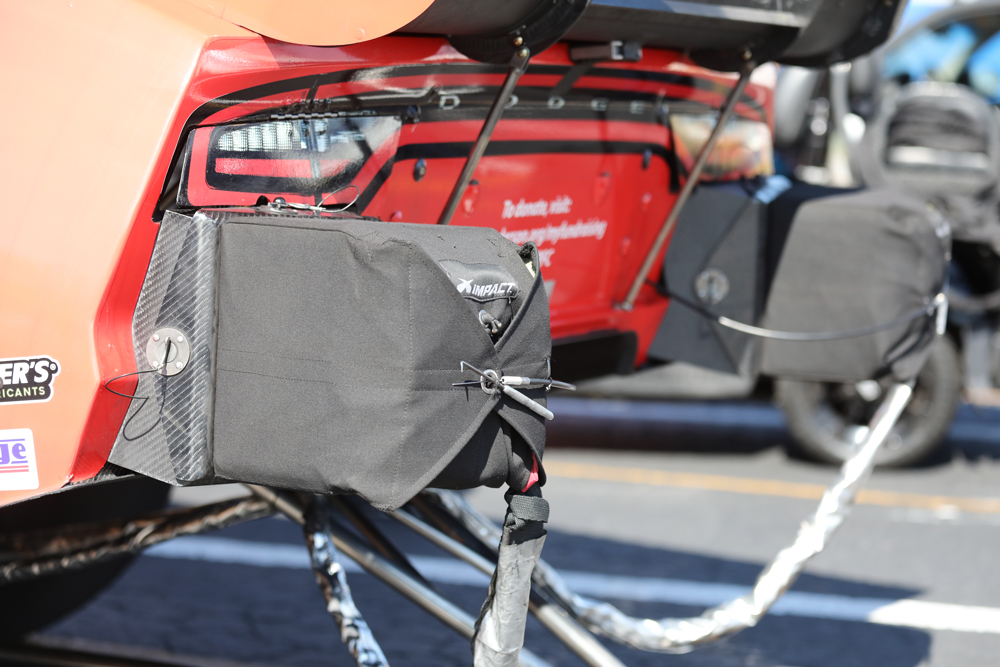
“Right now we’re coming out with a new system. We’re just waiting on approval,” said John Gentry of the Oklahoma City, Oklahoma-based Stroud Safety. “We used to use a suppressant called FE36. Now the EPA is banning that, and we’re forced to find another solution.”
SFI tests on the new system were being conducted. The new suppressant, Novec 1230 from 3M, itself isn’t being tested, but rather the new chemical has to work with Stroud’s engineering design that includes the nozzles and other equipment on the system.
“Our kits come with three nozzles: a 60-degree, a 120 and a 360,” explained Gentry. “Usually, two go in the engine bay and one in the driver’s compartment.”
The systems come with either a five- or 10-pound bottle. Some sanctioning bodies require two systems, and some racers look to save weight with the smallest system.
Another popular suppressant is AFFF, which stands for aqueous film forming foam. Whereas Novec is a gas that absorbs the heat of combustion to stop a fire, AFFF is discharged as a foam that covers the area of the spray patterns to snuff out the flames. AFFF is non-corrosive and environmentally friendly.
“The foam is water-based,” explained Brandon Marshall of Lifeline USA, Dublin, Virginia, a company that offers both types of suppressants depending on racer needs and budget. “We want to know what they’re doing with the vehicle and what their sanctioning body said. We typically give options, like a good, better, best.”
An entry-level system might be a $400 foam system followed by a $700 Novec system. More expensive systems might require electronic or thermal automatic deployment. And some sanctioning bodies require 20-pound systems, which would be two 10-pound bottles.
“For our Novec systems, typically those will run five nozzles, and on our foam systems we’ll run eight nozzles,” said Marshall.
More sanctioning bodies are expected to require fire suppression systems. The World of Outlaws NOS Energy Drink Sprint Cars will have them in place in 2023, and the off-road market is moving in that direction as well.
“That’s a big market. We have an off-the-shelf system, but typically those cars need something specific,” said Marshall, noting that many teams currently just bolt fire extinguishers to their rig’s rollbar. “But it’s usually a handheld, powder-based type of extinguisher that you’d have in your kitchen or pit box. The problem is all those vibrations are channeled through the chassis, and it’s packing the powder into a rock in the bottom of the extinguisher. That’s what will happen to these guys racing out in the desert for 200 miles.”
World Of Outlaws Sprint Car Series Mandates Fire Suppression Systems
The World of Outlaws NOS Energy Drink Sprint Car Series will require competitors to use on-board fire suppression systems in 2023 and beyond in an initiative that Series Technical Director Tom Devitt called a few years in the making.
“We’ve been talking about this idea for a few years and figured it was time to do it. We are one of the only major racing organizations in the country that doesn’t mandate [fire suppression systems], and we felt we had to make it right because the sprint car is like no other animal on the planet,” Devitt said. “I presented this during an owners’ meeting at the 2021 Knoxville Nationals with all our platinum [full-time touring] teams. Everybody was very much in favor of it.
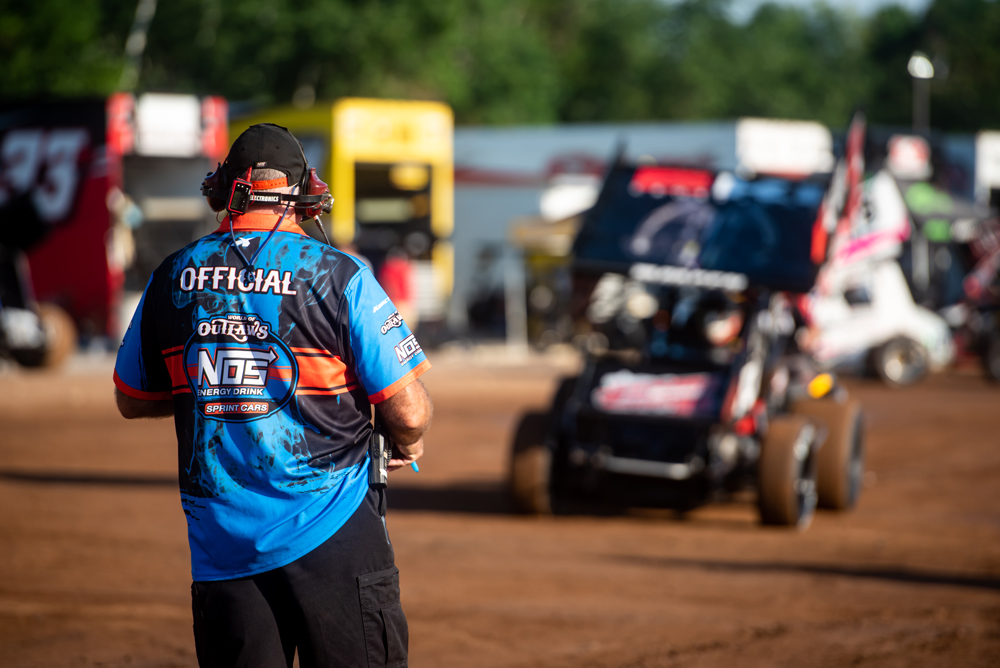
“We also talked to our other drivers and chassis builders, and got input from fire suppression manufacturers,” he continued. “We like to start early with changes like this because it affects sprint car racing across the country, not just World of Outlaws.”
Series officials are working with the SFI Foundation to develop new fire suppression specifications for sprint cars. Currently, the two standards (17.1 and 17.2) do not cover vehicles that use methanol as fuel, so officials are in the final stages of developing a brand-new 17.3 standard. Called the “Single Seat Open Wheel Front Engine On-Board Fire Suppression System,” the specification has already been drafted by SFI, which expects to finalize the process following research and development. The official rules and approved systems are expected to be released in May.
“We’re looking at the size of the bottle, where it will be placed, how many nozzles will be needed, what type of suppression material will be used to put the fire out,” Devitt said. “All of this is going through the SFI, which is doing all the testing with input from manufacturers.” —Laura Pitts
Advancements In Fuel-cell Technology
Fuel-cell development is one dimension of race car safety where new materials are being introduced to improve the product.
“The new ATL bladder is constructed of an all new, very pliable, low mass, yet extremely strong Kevlar reinforced elastomer,” said Dave Dack of Aero Tec Laboratories (ATL), Ramsey, New Jersey. “It has been thoroughly tested and has qualified to SFI’s stringent 32.1 standard.”
“We have developed a new fuel bladder material that holds up better to the methanol-laced fuels that are more commonly being used today,” added Steve Russell of Pyrotect Racing Cells, Redmond, Oregon. “We haven’t released it officially. We’ve been developing with teams running the new coatings. But that’s the wave of the future with more methanol fuels being used in more types of racing.”
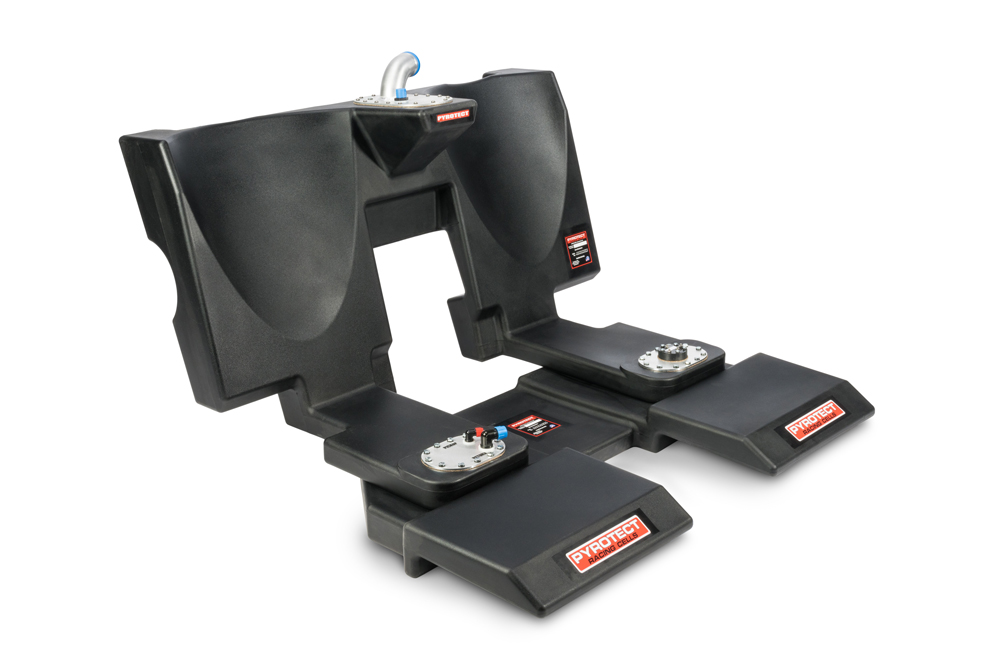
The new ATL bladder and fuel cell will be used in all NASCAR Next Gen cars that were introduced in the 2022 season. CAD-designed robotic cutting patterns were developed to achieve precise tolerances required for consistent manufacturing.
“This was especially important to satisfy NASCAR’s vision for an even playing field with no teams having an unfair advantage,” explained Dack. “Bladder capacities, weights, etc. remain extremely consistent from bladder to bladder.”
The Next Gen bladders also feature removable internal collector compartments that have secure attachments, explosive-resisting safety foam baffling, and a lightweight inner billet nut ring to accommodate team-supplied fill plates.
Stock cars run on gasoline, but there has been increased participation in classes that allow methanol, especially sprint cars, tractor pulling, and drag racing.
“Gasoline and methanol have completely different chemical backgrounds,” Russell explained. “They tend to react differently, and we have to use different materials to withstand them. Take an IndyCar fuel cell: Gasoline of any kind will ruin the bladder. And alcohol in a gasoline bladder will ruin the bladder. To have one that will withstand both, to some levels, is really difficult. We’ve been working on coating formulations to enhance the alcohol resistance, since we’re finding more fuels being laced with methanol at higher concentrates.”
The market for fuel cells continues to expand, especially in off-road and powersports. UTVs can present a unique packaging challenge for racers trying to increase fuel capacity.
“It’s a growing market with very tight quarters, and it’s difficult to put larger volumes of fuel in these vehicles. So, you do have to get creative,” explained Russell, noting that driveshafts and wiring harnesses often want to share the same space as a fuel cell. “We put a tube through the fuel cell for these items. Then there are the filler tubes, vents, sending units, pickups. Usually it’s very tight, so we have to get very creative on how to handle that.”
The future for even more improvement in fuel cell development is quite optimistic. These suppliers are often involved in other markets, including military operations, where fuel containment is critical.
“ATL is extremely active in defense and aerospace markets,” Dack told us. “Much of this specialized technology and unique materials developed for unmanned aircraft and military vehicles and vessels have been adapted to racing markets.” —Mike Magda
Carbon Safety Technologies
Purpose-built Sprint Car/Midget Fire Suppression System
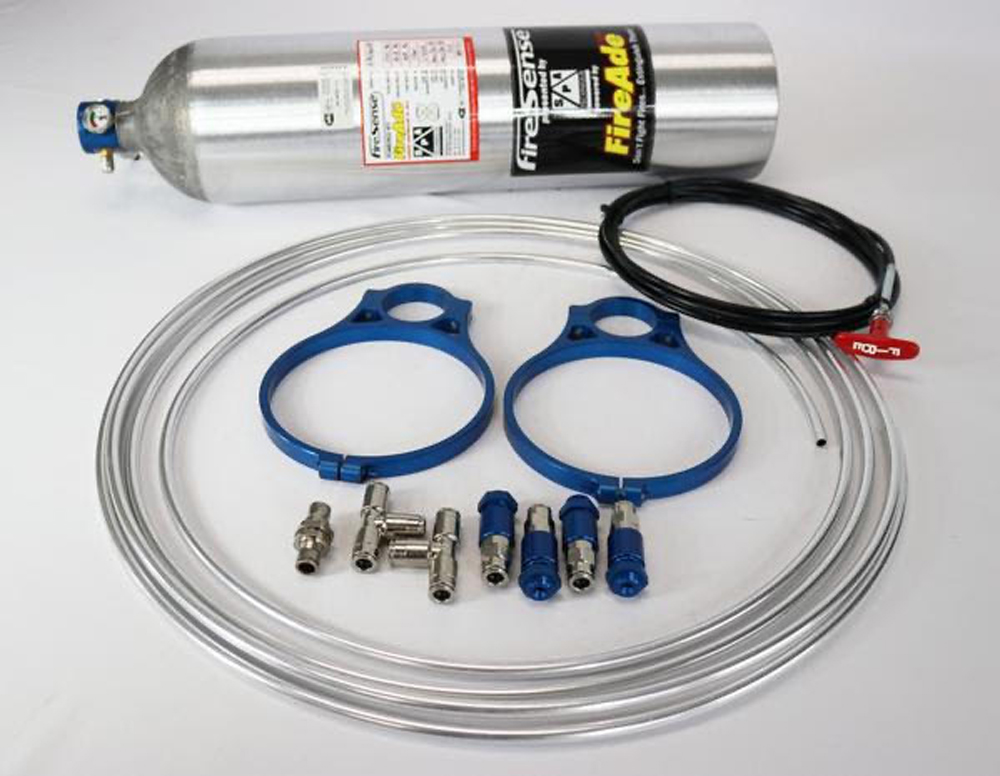
• 5 lbs. of 4Fire Universal.
• DOT3AL cylinder/bottle.
• One AM Block, has both automatic thermal
bulb activation at 175 degrees F and manual
activation with a pull lanyard, and push-lock
fittings for easy tubing connection.
• Three nozzles with push-lock fitting.
• One T push-lock fitting.
• 10 feet of aluminum.
For more info: carbonsafetytechnologies.com
Design Engineering, Inc.
Sensor and Connector Covers
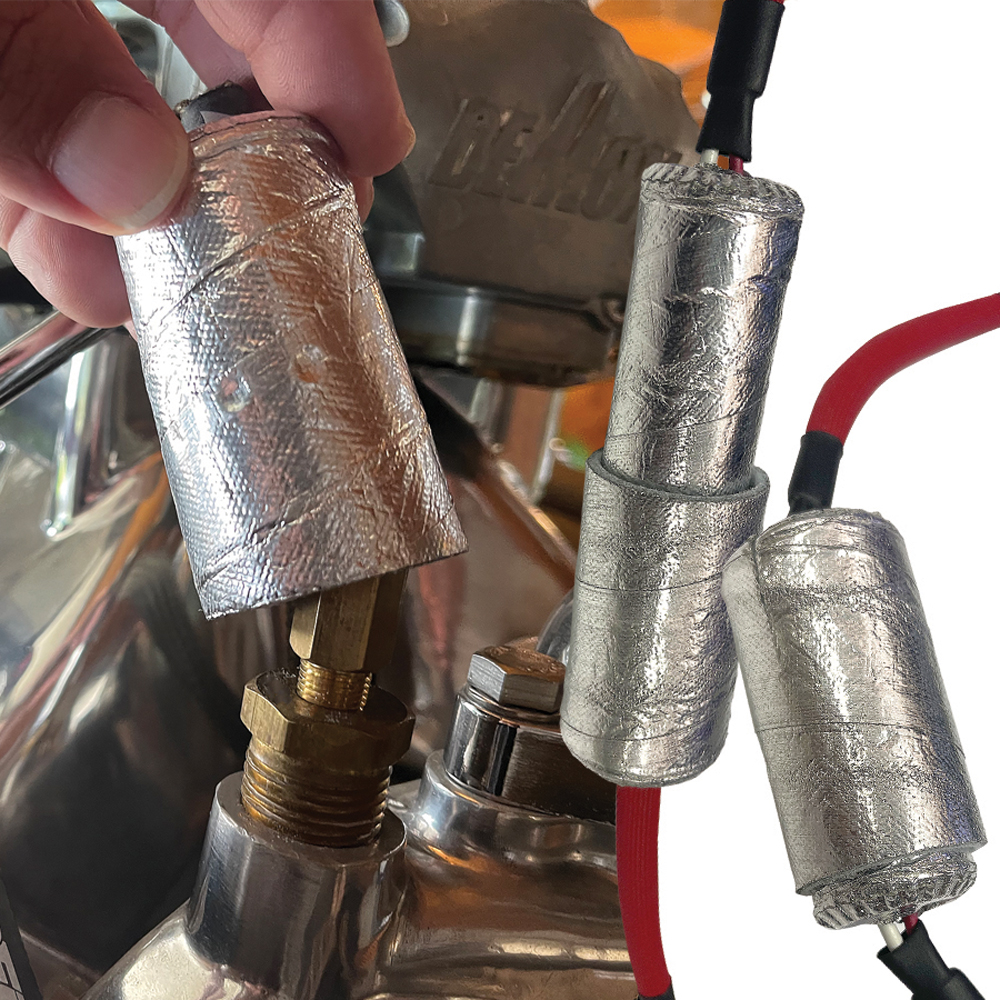
• Protect sensors plugs and wire connectors
from heat, moisture, and dirt.
• Aluminized insulation that reflects heat and
acts as a thermal barrier for sensitive wire
connections and sensors.
• Simple to install with a split top.
• Can be nested to fully cover connectors
near engine manifolds, turbos, and their
heat sources.
For more info: designengineering.com
Pyrotect Racing Cells
Polaris RZR RS1 UTV Fuel Cell
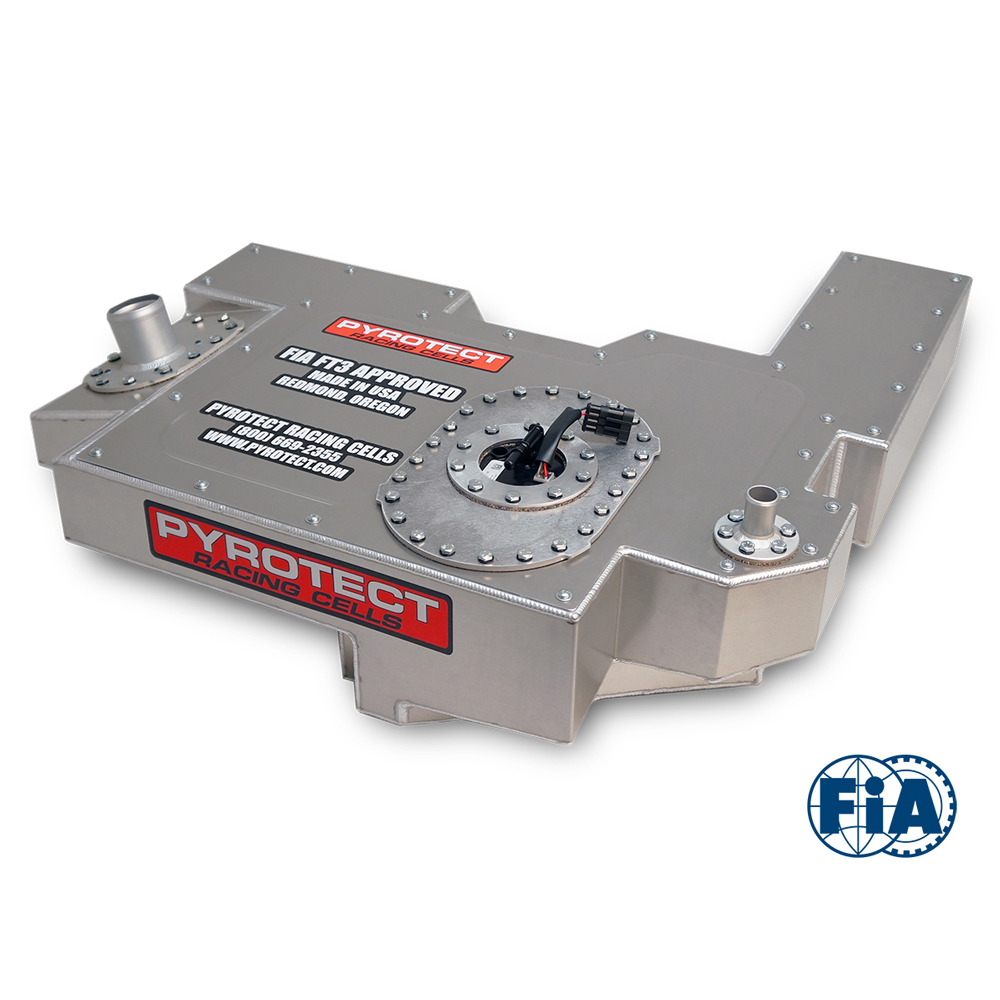
• Capacity: 12 gallons.
• Designed to fit stock location.
• Fully TIG welded aluminum container .080 standard.
• Durable ballistic nylon/urethane bladder.
• Utilizes stock fuel pump sending unit module.
• FIA FT3 homologation.
• Includes 1-inch vent check valve.
• 2 1/4 remote fill with roll-over check valve.
For more info: pyrotect.com
RaceQuip
6-Point All 2-inch FIA-Rated Harness Set
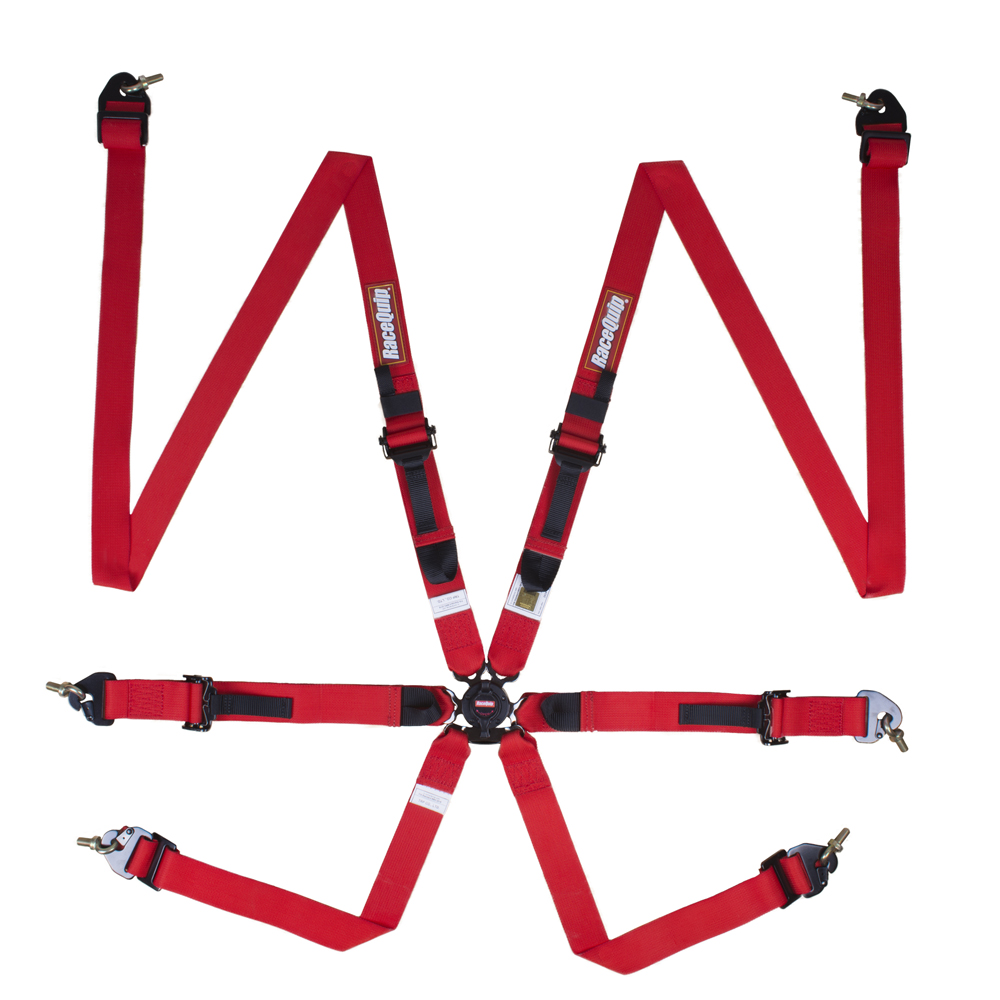
• Two-inch lap belt with pull-up adjusters.
• Two-inch shoulder belt accommodates HANS/FHR device.
• Shoulders and crotch can be changed to wrap or bolt in.
• Certified to FIA 8853-2016 specifications.
• Mono filament woven for increased strength and smoother edges.
• Dual direction magnesium alloy cam buckle.
• Six snap ends and six #700050 eyebolts included.
For more info: racequip.com
Safecraft
LT Model
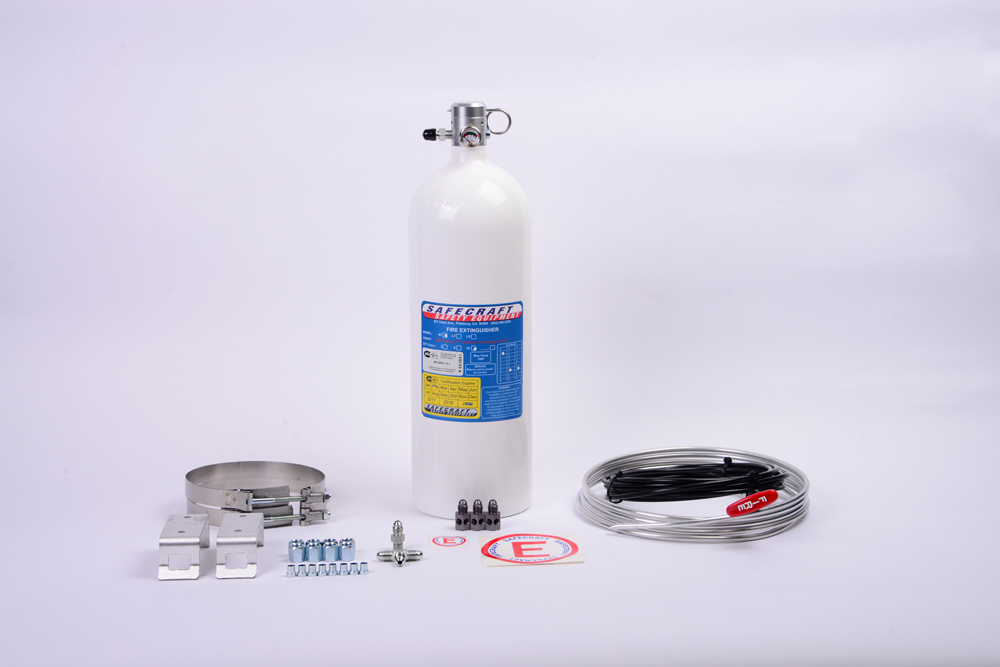
• Uses 3M Novec 1230 Fire Protection Fluid.
• Manual pull-cable activation.
• Available with aluminum or stainless steel tubing.
• The “gold standard” of the industry.
• With its wide variety of activation and mounting options,
it can be easily integrated in all vehicle designs.
• The 10-pound system comes with all fittings, tubing, and
nozzles needed for installation along with mounts
and brackets.
For more info: safecraft.com
Thermo Tec
Aluminized Heat Barrier
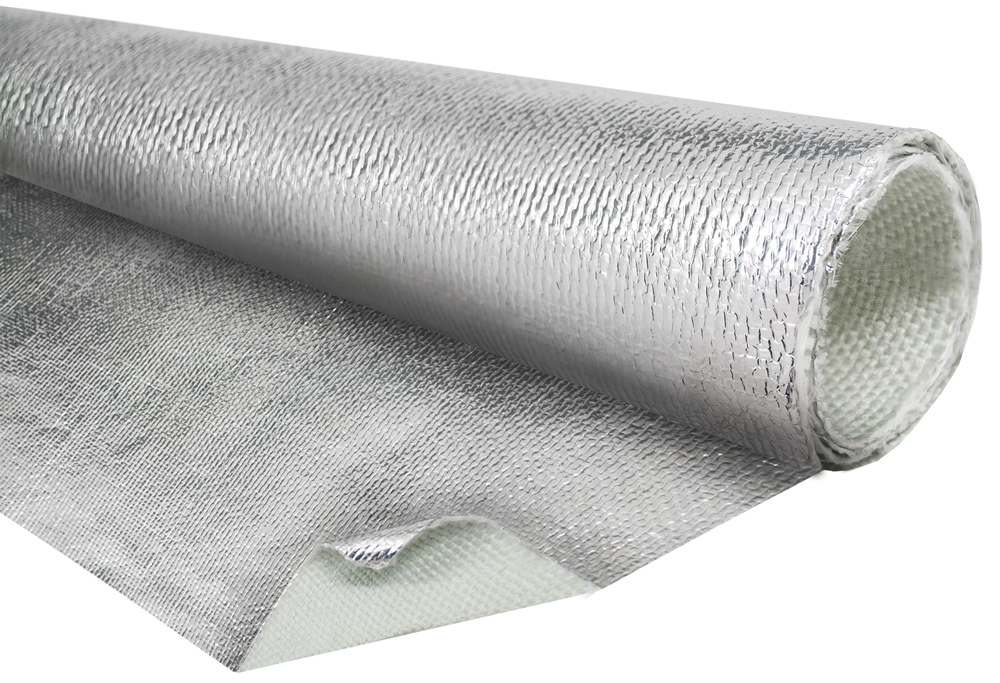
• Woven silica with flexible aluminized finish.
• Capable of withstanding radiant temperatures up to 2,000 degrees F.
• Fabric side can handle temperatures up to 1,000 degrees F.
• Can be installed using standard rivets with a backup washer or weather strip adhesive.
• The use of clamps or straps such as Thermo Tec’s Snap Strap can be used to hold the blanket in place for manifolds or exhaust systems.
• This product can be cut to fit.
For more info: thermotec.com
SOURCES
ATL
atlinc.com
ButlerBuilt
butlerbuilt.net
Carbon Safety Technologies
carbonsafetytechnologies.com
Design Engineering, Inc.
designengineering.com
G-FORCE Racing Gear
gforce.com
Impact Racing
ximpactusa.com
Lifeline USA
lifeline-fire.com
Max Papis Inc.
maxpapisinc.com
Pyrotect Racing Cells
pyrotect.com
RaceQuip
racequip.com
Safecraft
safecraft.com
Speed Seat Factory
speedseatfactory.com
Stroud Safety
stroudsafety.com
Thermo Tec
thermotec.com
World of Outlaws
worldofoutlaws.com
 MEMBERSHIP LOGIN
MEMBERSHIP LOGIN JOIN PRI
JOIN PRI


